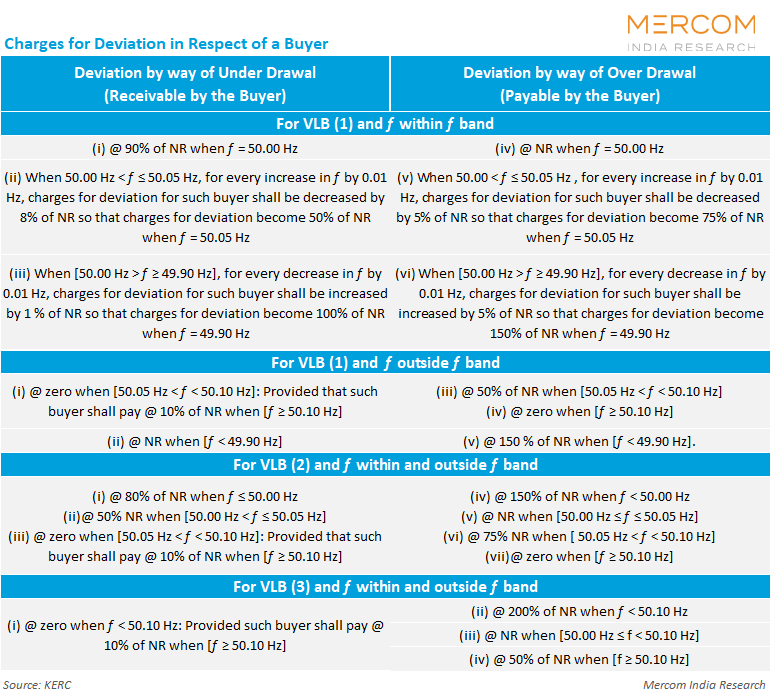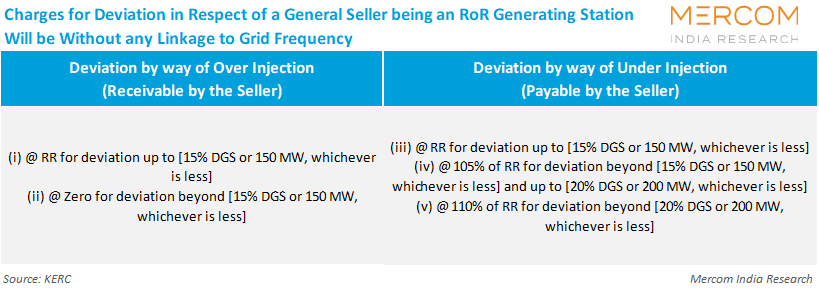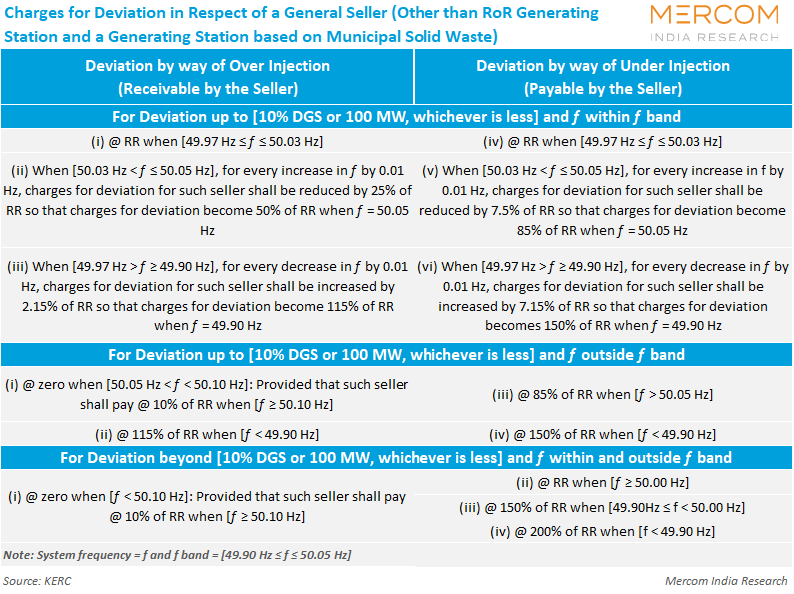Karnataka Electricity Regulator Issues Deviation Settlement Guidelines
The guidelines aim to counter grid frequency fluctuations
July 18, 2025
Follow Mercom India on WhatsApp for exclusive updates on clean energy news and insights
The Karnataka Electricity Regulatory Commission (KERC) has issued the Intra-State Deviation Settlement Mechanism and Related Matters Regulations, 2025, to establish a commercial mechanism to ensure grid users’ adherence to scheduled electricity drawal and injection, and maintain grid security and stability.
The regulations apply to all grid-connected entities engaged in the intrastate purchase and sale of electricity within the state.
The commission issued the draft document in October last year.
Availability-Based Tariff (ABT) and Deviation Settlement Mechanism
Under the ABT regime, the tariff comprises three components:
- Fixed/Capacity Charges: Charges payable to generators based on the allocated capacity and are tied to the daily declared availability of the generating stations, measured in MW
- Energy/Variable Charges: Energy charges or variable charges payable on the scheduled energy irrespective of actual drawal
- Deviation Charges: Charges accounting for the variation between actual and scheduled generation or actual and scheduled drawal
Intra-State ABT Applicability
The intra-state ABT will govern the following:
- Wind, solar, and wind-solar (WS) hybrid generating stations with installed capacities exceeding 5 MW, supplying power under long-term, medium-term, or short-term contracts to state distribution licensees at tariffs determined under Section 62 or 63 of the Electricity Act
- All conventional fuel-based generators, including captive generating projects (CGPs), that sell power directly through electricity traders or exchanges, intending to supply power to state distribution licensees under short-term contracts
- All generating stations, including renewable energy projects and CGPs, are selling power outside Karnataka under long, medium, or short-term contracts
- Generating stations, including renewable energy projects and CGPs, sell power to intra-state consumers under long, medium, or short-term contracts
- Distribution licensees drawing power from the state grid
- All open-access consumers and captive users within Karnataka who procure or receive power through the state grid will be governed by the intra-state ABT for electricity supplied by generating stations or licensees under inter-state or intra-state ABT
Applicability of Deviation Charge Component under the Intra-State ABT
The following entities will be governed by the intra-state ABT only concerning applicable deviation charges:
- All small-scale consumers in Karnataka are procuring power through open access
- All generators, including CGPs, that sell power directly or through electricity traders, are contracted to supply power exclusively to small-scale consumers and/or medium-scale consumers
- All generators, including CGPs, that sell power directly or through electricity traders, are contracted to supply power exclusively to licensees or consumers located outside Karnataka
Computation of Deviation
Every grid-connected state entity must adhere to its schedule as per the Grid Code and not deviate from it. The State Load Despatch Centre (SLDC) must manage any deviation.
Deviation charges will be calculated as follows:
- Deviation in a time block for General sellers will be computed as follows:
Deviation – general seller (DGS) (in MWh) = [(Actual injection in MWh) – (Scheduled generation in MWh)].
Deviation – general seller (DGS) (in %) = 100 x [(Actual injection in MWh) – (Scheduled generation in MWh)] / [(Scheduled generation in MWh)]
- Deviation in a time block for RE seller other than WS/WSH seller will be computed as follows:
Deviation – RE seller (in MWh) = [(Actual injection in MWh) – (Scheduled generation in MWh)].
Deviation – RE seller (in %) = 100 x [(Actual injection in MWh) – (Scheduled generation in MWh)] / [(Scheduled generation in MWh)].
- Deviation in a time block for buyers will be computed as follows:
Deviation – buyer (DBUY) (in MWh) = [(Actual drawal in MWh) – (Scheduled drawal in MWh)].
Deviation – buyer (DBUY) (in %) = 100 x [(Actual drawal in MWh) – (Total Scheduled drawal in MWh)] / [(Total Scheduled drawal in MWh)].
Normal Rate of Charges for Deviation
The Normal Rate (NR) of charges for deviation for a particular time block will be the highest of (A), (B), or (C), where (A), (B), and (C) are as follows:
(A) The weighted average ACP (in Paise /kWh) of the Integrated- Day Ahead Market segments of all the Power Exchanges.
(B) The weighted average ACP (in Paise /kWh) of the Real Time Market segments of all the Power Exchanges.
(C) The sum of: (a) 1/3 [ Weighted average ACP (in paise/kWh) of the Integrated- Day Ahead Market segments of all the Power Exchanges]; (b) 1/3 [ Weighted average ACP (in paise/kWh) of the Real-Time Market segments of all the Power Exchanges]
(c) 1/3 [Ancillary Service Charge (in paise/kWh) computed based on the total quantum of Ancillary Services (SRAS UP and TRAS UP) deployed and the net charges payable to the Ancillary Service Providers for all the Regions]: Provided that in case of non-availability of ACP for any time block on a given day, ACP for the corresponding time block of the last available day will be considered.
Deviation charges
Scheduling and Despatch
Sellers/buyers will bear energy loss (transmission loss or distribution loss) for their injection /drawal schedules at the interface point with the state grid.
The seller supplying power in the short term must submit a monthly declared capacity. Accordingly, buyers must submit their requirements to SLDC in 15-minute time blocks, and based on these, SLDC will finalize the injection/drawal schedule.
If the sellers/buyers fail to submit the declared capacity/drawal requirement for power scheduling, it will be considered zero for all purposes. However, a maximum of two schedule revisions per month, with advance intimation to SLDC and the distribution licensee, will be allowed, effective from 00:00 hours on the next day.
For day-ahead transactions, the seller will convey the declared capacity/schedules to SLDC one day in advance, up to 08:00 hours of the day.
SLDC may refuse to accept schedule/capability changes of less than 2% of the previous schedule/capability or 0.5 MW, whichever is more.
The SLDC may revise the schedules. The revised schedules will become effective from the 4th time block, counting the time block in which the SLDC issues the revised schedule to be the first one.
SLDC may curtail the transactions that are already scheduled due to transmission constraints.
Energy accounting and settlement
- Settlement of energy at the drawal point in respect of a Single Supply Consumer
The scheduled drawal (MWh) at the drawal point will be computed for each time block from the scheduled drawal (in MW) for such consumer through open access at the drawal point, considering the energy losses of the State grid.
All excess energy consumed will be treated as consumed by the consumer from the State grid, treated as deviation, and paid by the consumer at the applicable DSM charge.
- Settlement of energy at drawal point in respect of Multiple Supply Consumer
The total scheduled drawal at the drawal point will be computed for each time block, considering contract demand (in MVA) with the licensee (considering power factor 0.90) and drawal schedule for the consumer through open access at the drawal point by considering the losses of the state grid.
If the distribution licensee levies demand charges, the actual drawal will first be set off against the actual demand scheduled through open access for the respective time block, and the remaining amount will be considered as drawal against the contract demand with the distribution licensee.
Energy charges for medium-scale consumers receiving power other than solar power will be levied by the distribution licensee according to the respective tariff, based on the actual energy consumed in the billing month, after deducting the energy scheduled for open access.
Deviation Charge Payment and Settlement
Deviation charges are settled via the state deviation pool account maintained by the distribution licensee. Payment will be due within 10 days of DSM account issuance. Any delay beyond the due date attracts 0.04% daily interest. A letter of credit (LC) is mandatory for entities with prior defaults, equal to 110% of the peak weekly/monthly liability. Non-payment leads to LC encashment and recovery action.
Subscribe to Mercom’s real-time Regulatory Updates to ensure you don’t miss any critical updates from the renewable industry.




